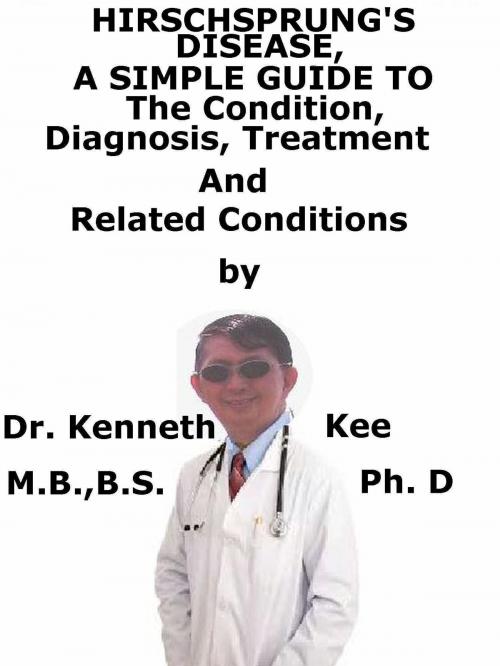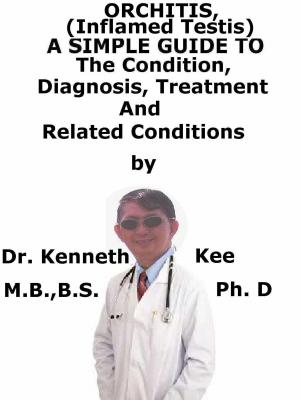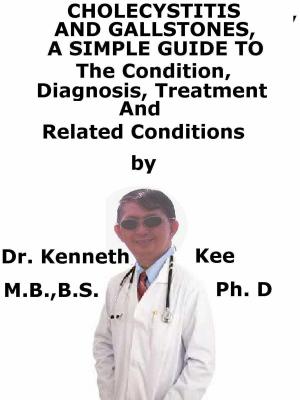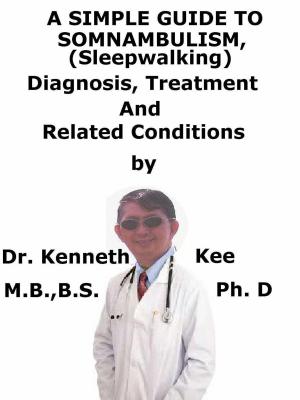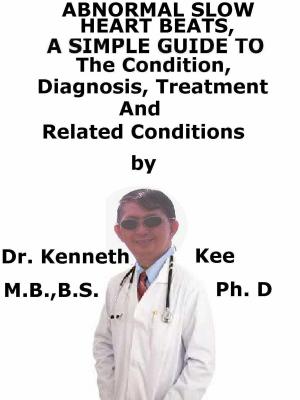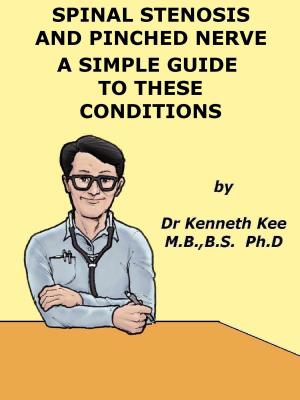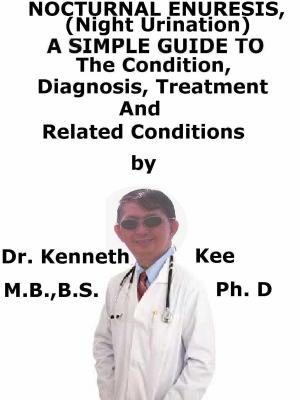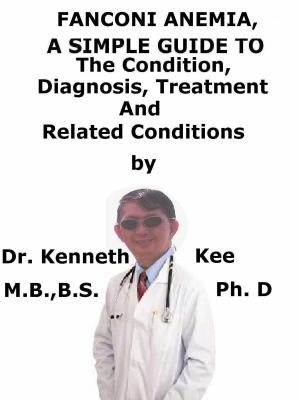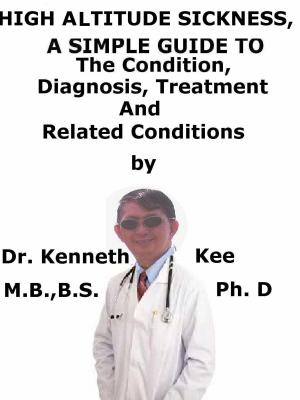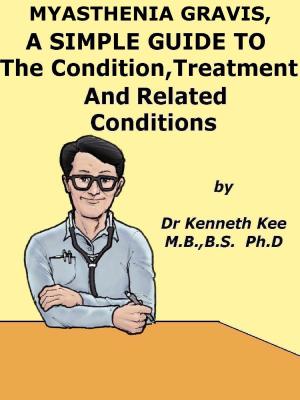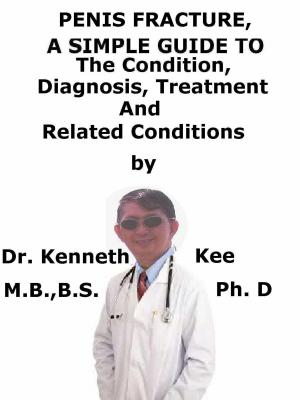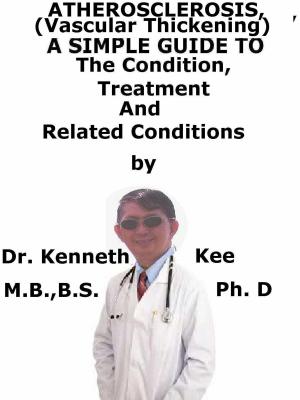Hirschsprung’s Disease, A Simple Guide To The Condition, Diagnosis, Treatment And Related Conditions
Nonfiction, Health & Well Being, Medical, Specialties, Internal Medicine, Gastroenterology, Health, Ailments & Diseases, Abdominal| Author: | Kenneth Kee | ISBN: | 9781370527496 |
| Publisher: | Kenneth Kee | Publication: | March 17, 2017 |
| Imprint: | Smashwords Edition | Language: | English |
| Author: | Kenneth Kee |
| ISBN: | 9781370527496 |
| Publisher: | Kenneth Kee |
| Publication: | March 17, 2017 |
| Imprint: | Smashwords Edition |
| Language: | English |
Hirschsprung’s disease is a congenital disorder causing blockage of the large intestine.
It happens due to poor muscle movement in the bowel.
The underlying pathology is the absence of parasympathetic ganglion cells in the myenteric and sub-mucosal plexus of the rectum, and sometimes also in the colon.
Normally 24h) is very important because:
50% of all Hirschsprung’s patients do not pass meconium within 36h
50% of all children with delayed passage of meconium have Hirschsprung’s disease
Rectal examination often reveals the narrowing of the rectosigmoid colon.
When the finger is withdrawn, there may be evacuation of a watery stool.
Symptoms in older children:
1. Constipation that slowly becomes worse
2. Fecal impaction
3. Malnutrition
4. Slow growth
5. Swollen belly
Milder cases may not be diagnosed until the baby is older.
During a physical exam, the doctor may be able to feel loops of bowel in the swollen abdomen.
A rectal exam may indicate tight muscle tone in the rectal muscles.
Tests used to help diagnose Hirschsprung's disease may be:
1. Abdominal x-ray
2. Anal manometry (a balloon is inflated in the rectum to measure pressure in the area)
3. Barium enema
4. Rectal biopsy
Treatment
A procedure called serial rectal irrigation helps alleviate pressure in (decompress) the bowel.
The abnormal section of colon must be removed using surgery.
Most often, the rectum and abnormal part of the colon are removed.
The healthy part of the colon is then pulled down and attached to the anus.
Sometimes this can be done in 1 operation.
It is often done in 2 parts.
A colostomy is performed first.
The other part of the procedure is done later in the child's first year of life.
The most often performed repairs are the Swenson, Duhamel, and Soave procedures.
Several other creative methods have been done, such as:
1. A modified transanal method with trans-abdominal open or laparoscopic assistance,
2. Single-incision laparoscopic endorectal pull-through (SILEP), and
3. Natural orifice trans-luminal endoscopic surgery (NOTES)
Regeneration cell treatments are under studies to return function in aganglionic intestine.
TABLE OF CONTENT
Introduction
Chapter 1 Hirschsprung’s Disease
Chapter 2 Causes
Chapter 3 Symptoms
Chapter 4 Diagnosis
Chapter 5 Treatment
Chapter 6 Prognosis
Chapter 7 Intussusception
Chapter 8 Volvulus
Epilogue
Hirschsprung’s disease is a congenital disorder causing blockage of the large intestine.
It happens due to poor muscle movement in the bowel.
The underlying pathology is the absence of parasympathetic ganglion cells in the myenteric and sub-mucosal plexus of the rectum, and sometimes also in the colon.
Normally 24h) is very important because:
50% of all Hirschsprung’s patients do not pass meconium within 36h
50% of all children with delayed passage of meconium have Hirschsprung’s disease
Rectal examination often reveals the narrowing of the rectosigmoid colon.
When the finger is withdrawn, there may be evacuation of a watery stool.
Symptoms in older children:
1. Constipation that slowly becomes worse
2. Fecal impaction
3. Malnutrition
4. Slow growth
5. Swollen belly
Milder cases may not be diagnosed until the baby is older.
During a physical exam, the doctor may be able to feel loops of bowel in the swollen abdomen.
A rectal exam may indicate tight muscle tone in the rectal muscles.
Tests used to help diagnose Hirschsprung's disease may be:
1. Abdominal x-ray
2. Anal manometry (a balloon is inflated in the rectum to measure pressure in the area)
3. Barium enema
4. Rectal biopsy
Treatment
A procedure called serial rectal irrigation helps alleviate pressure in (decompress) the bowel.
The abnormal section of colon must be removed using surgery.
Most often, the rectum and abnormal part of the colon are removed.
The healthy part of the colon is then pulled down and attached to the anus.
Sometimes this can be done in 1 operation.
It is often done in 2 parts.
A colostomy is performed first.
The other part of the procedure is done later in the child's first year of life.
The most often performed repairs are the Swenson, Duhamel, and Soave procedures.
Several other creative methods have been done, such as:
1. A modified transanal method with trans-abdominal open or laparoscopic assistance,
2. Single-incision laparoscopic endorectal pull-through (SILEP), and
3. Natural orifice trans-luminal endoscopic surgery (NOTES)
Regeneration cell treatments are under studies to return function in aganglionic intestine.
TABLE OF CONTENT
Introduction
Chapter 1 Hirschsprung’s Disease
Chapter 2 Causes
Chapter 3 Symptoms
Chapter 4 Diagnosis
Chapter 5 Treatment
Chapter 6 Prognosis
Chapter 7 Intussusception
Chapter 8 Volvulus
Epilogue
